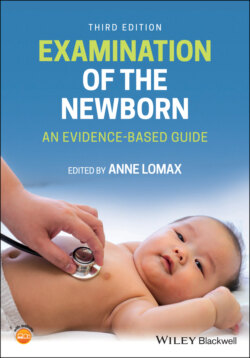Читать книгу Examination of the Newborn - Группа авторов - Страница 34
Maternal alcohol consumption
ОглавлениеFetal alcohol exposure from excessive maternal consumption is associated with dysmorphic features and varied neurodevelopmental and behavioural disorders ranging from fetal alcohol syndrome to fetal alcohol spectrum disorders (Disney et al. 2008). Maternal alcohol consumption is often associated with an existing suboptimal social environment (Dawson 2003). The likelihood of domestic abuse may also be greater. The newborn can also suffer withdrawal symptoms from prenatal alcohol exposure that may result in seizure activity (Lall 2008).
Admittance to alcohol consumption during pregnancy in excessive amounts is often retrospective (Jacobson et al. 2002); therefore, intervention and preventative strategies must be put in place for subsequent pregnancies. Disney et al. (2008) reports on the long‐standing evidence (Olson et al. 1997; Roebuck et al. 1999) to support altered neurobehavioural abilities in infancy through to antisocial behaviour and attention deficit disorders in children from small amounts of alcohol during pregnancy (Jacobson et al. 2002; Sayal 2007; Sayal et al. 2009). Enquiries into maternal alcohol and units consumed are made by the midwife at the prenatal booking interview. The current social acceptability of alcohol consumption in the United Kingdom may be harbouring an upsurge in a future generation who are affected by prenatal alcohol exposure. Some women, particularly the teenage population, may be engaging in alcohol misuse around the time of conception and beyond until confirmation of the pregnancy. For some newborns, the cessation of alcohol use, even early in the first trimester, may be too late.
